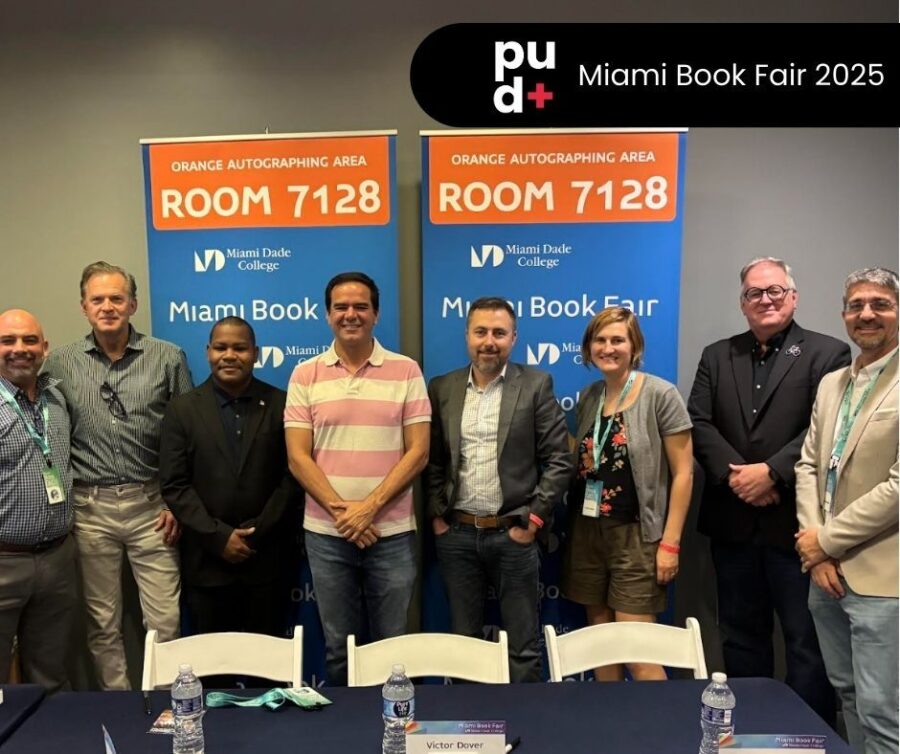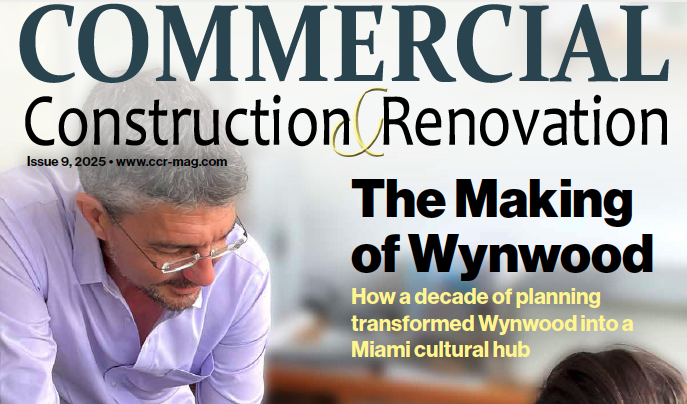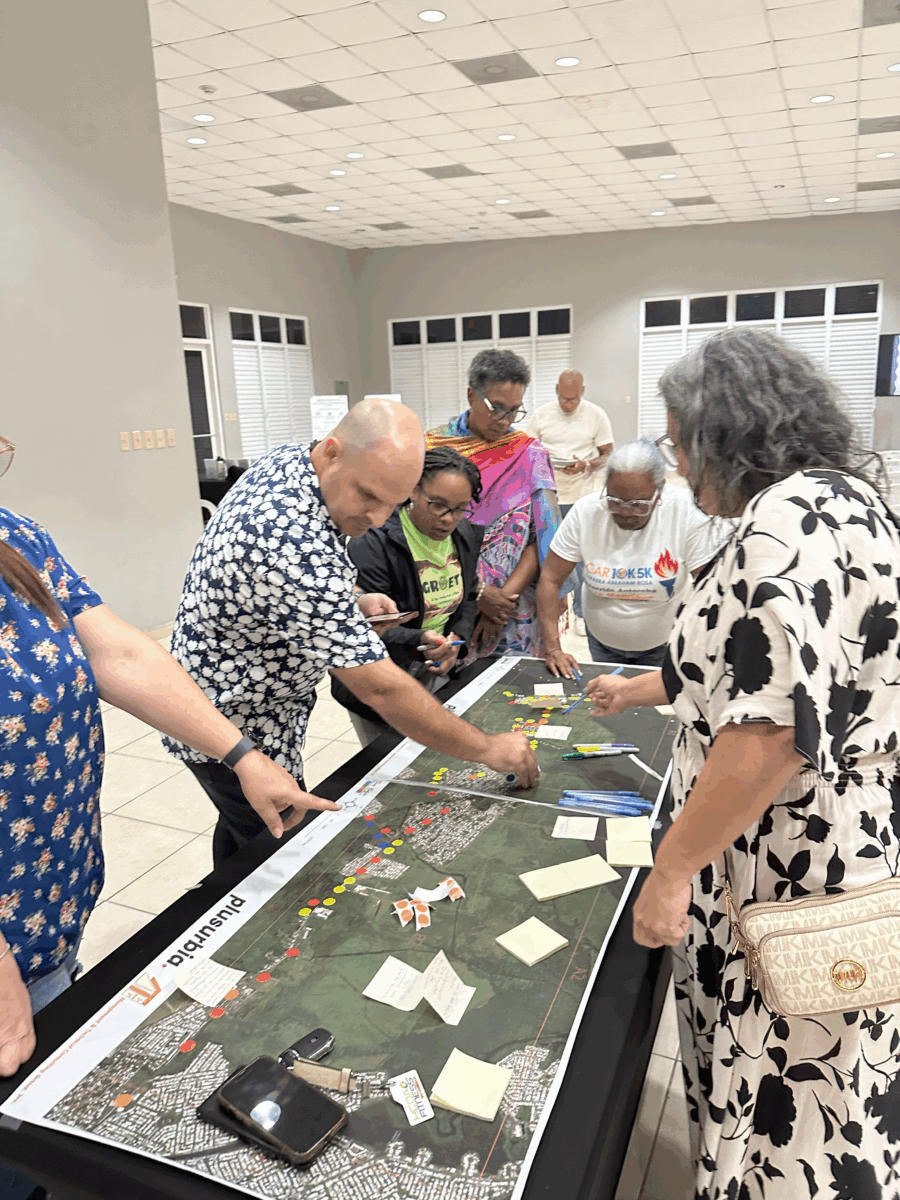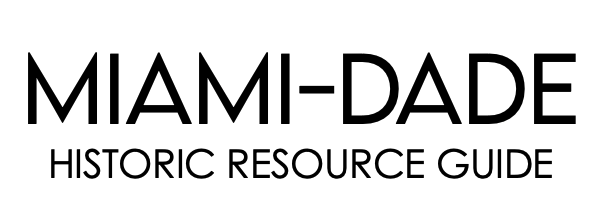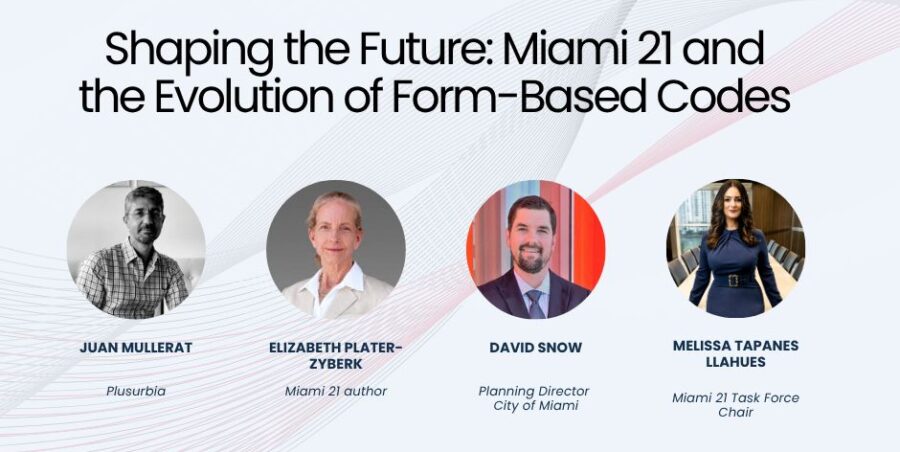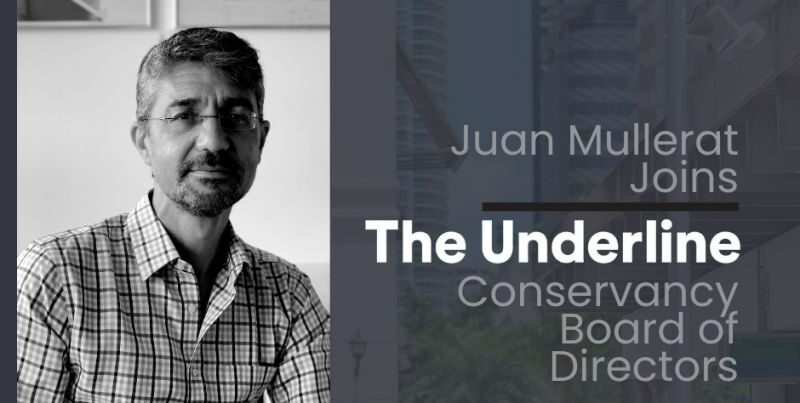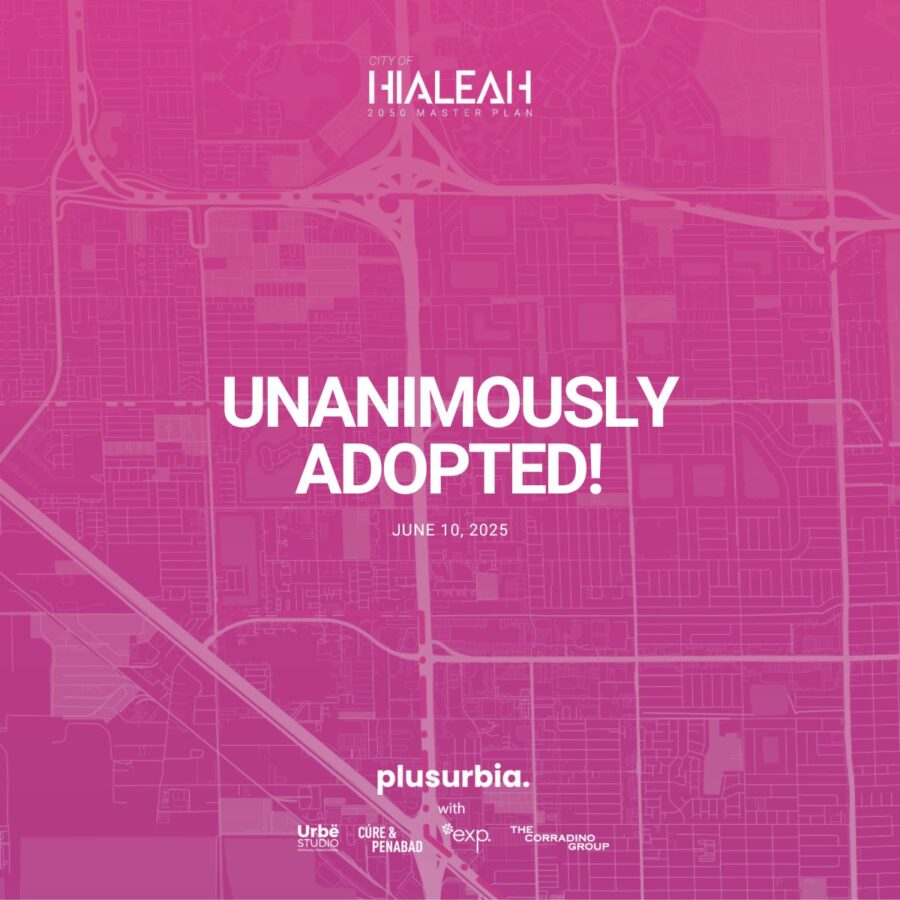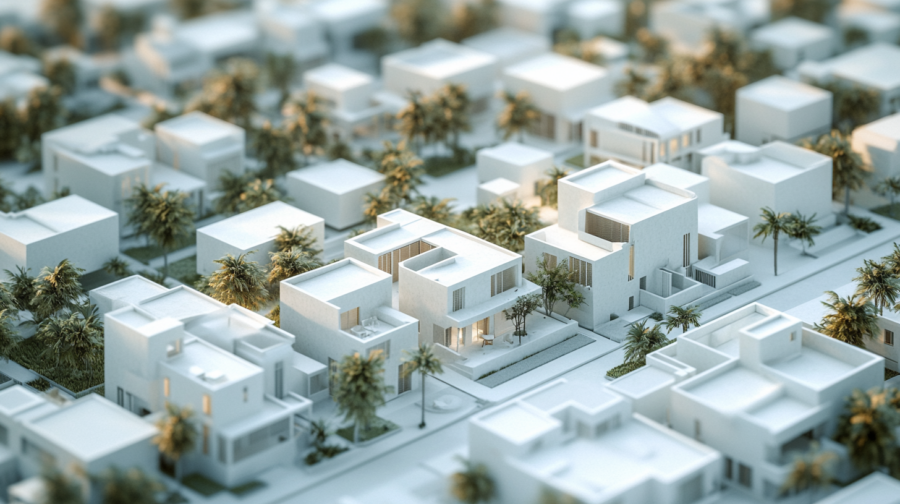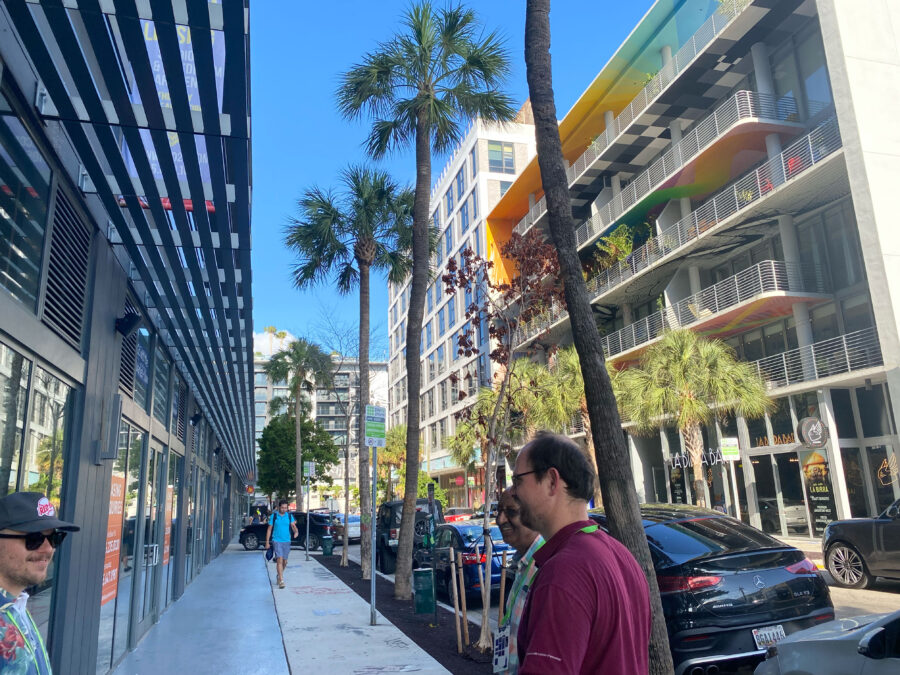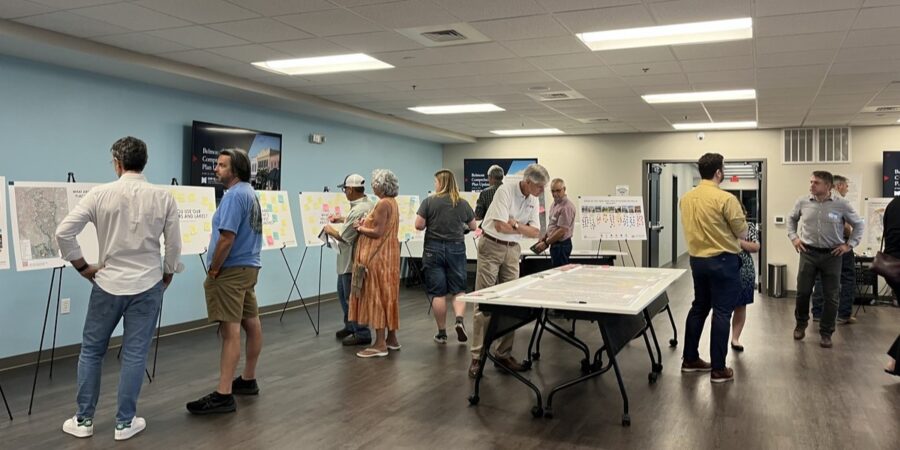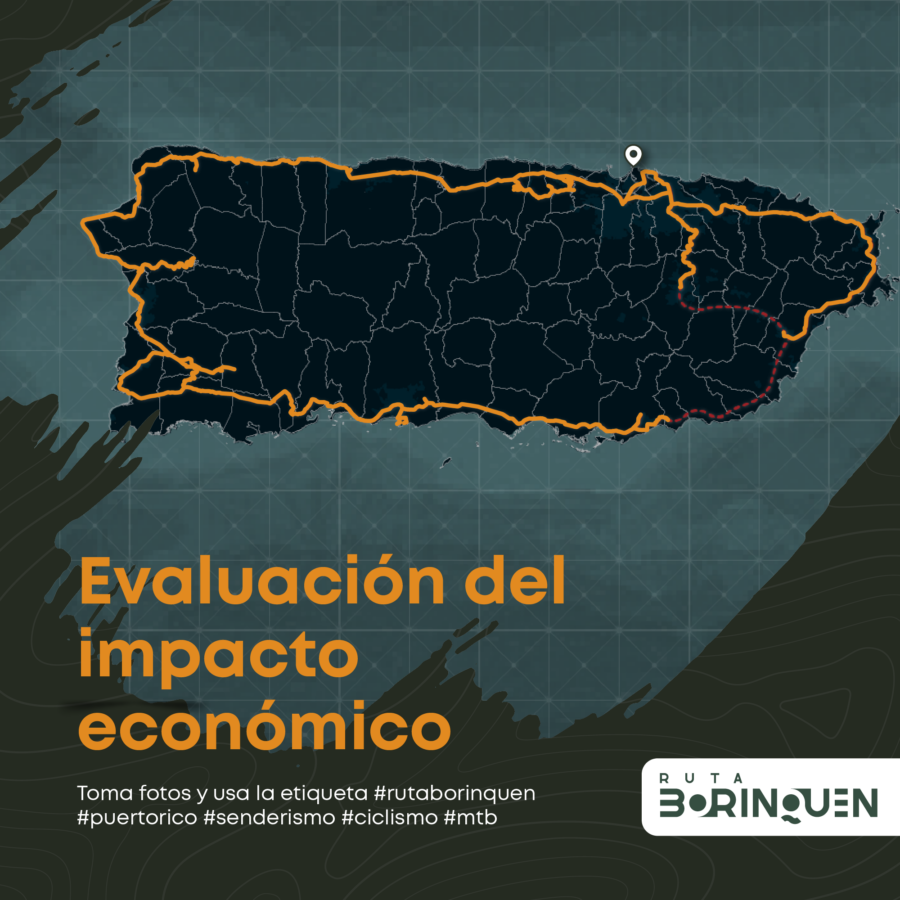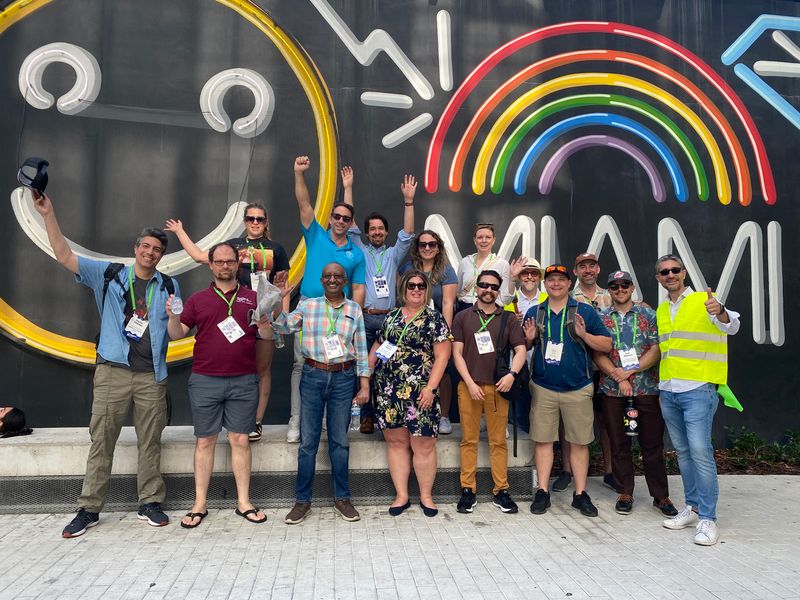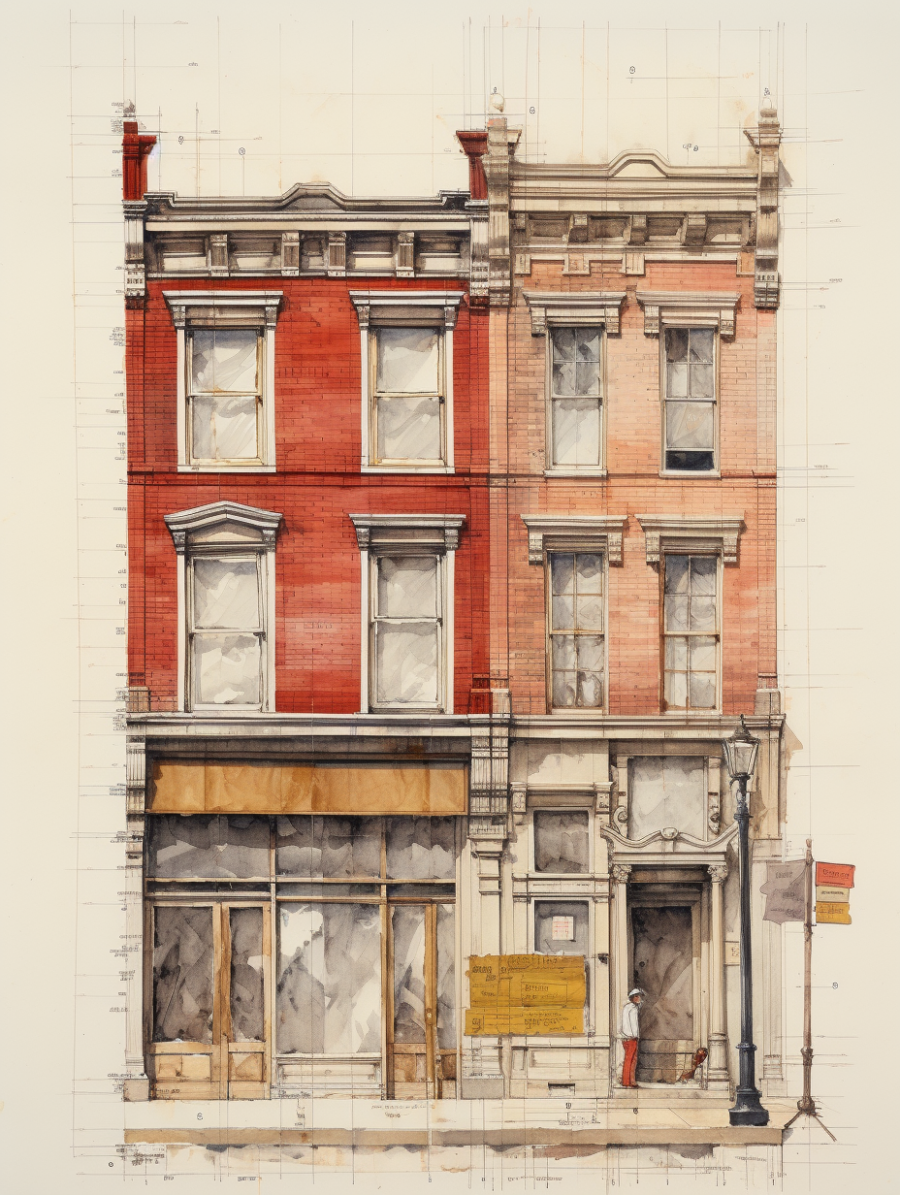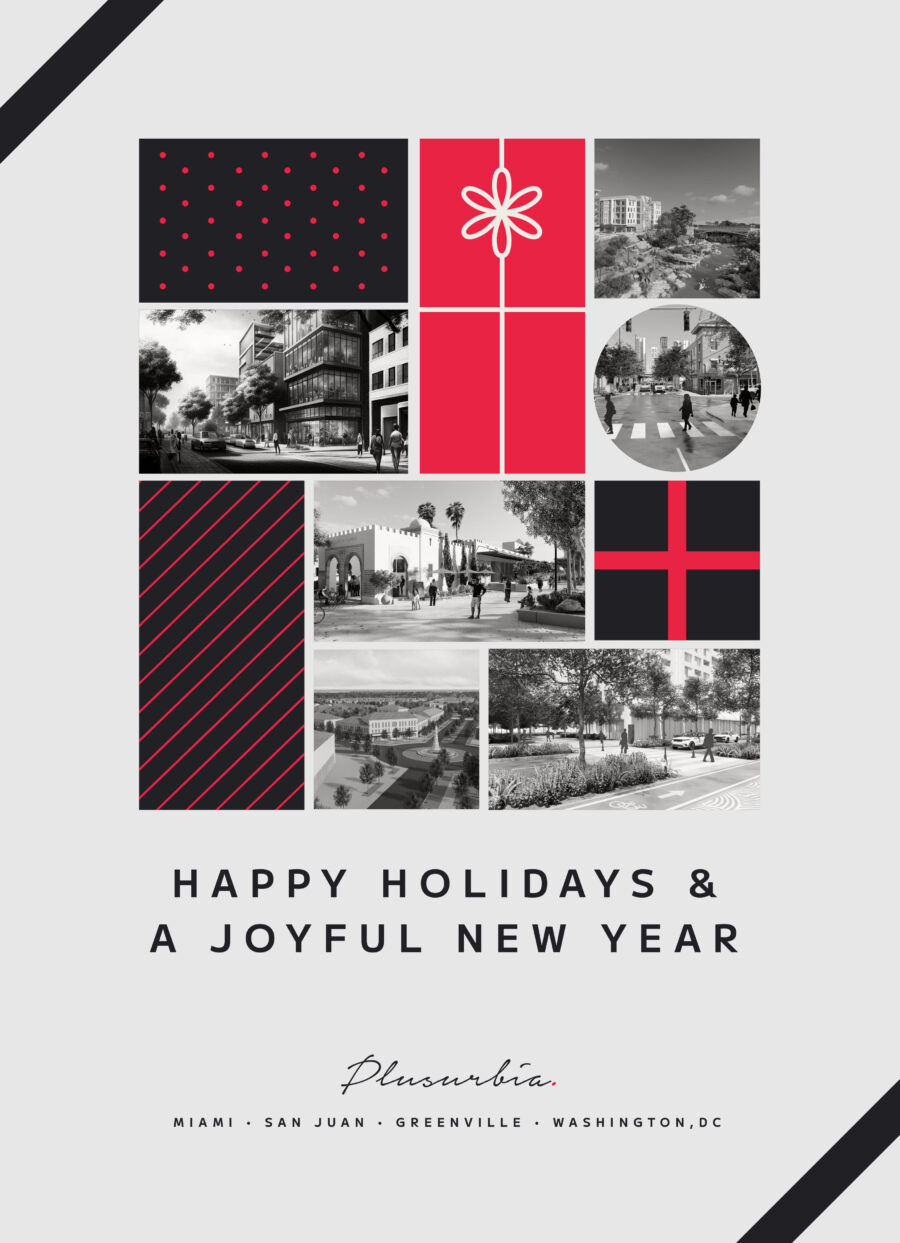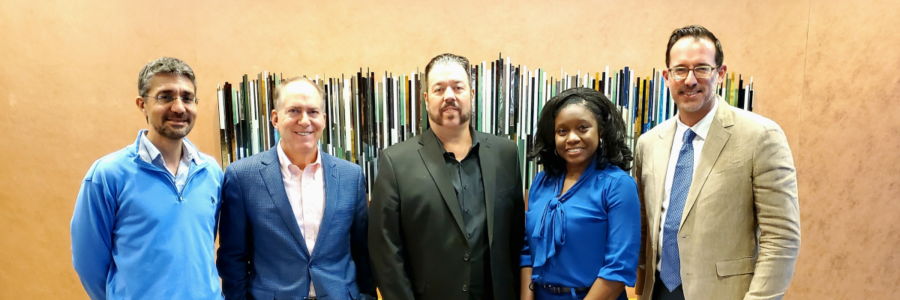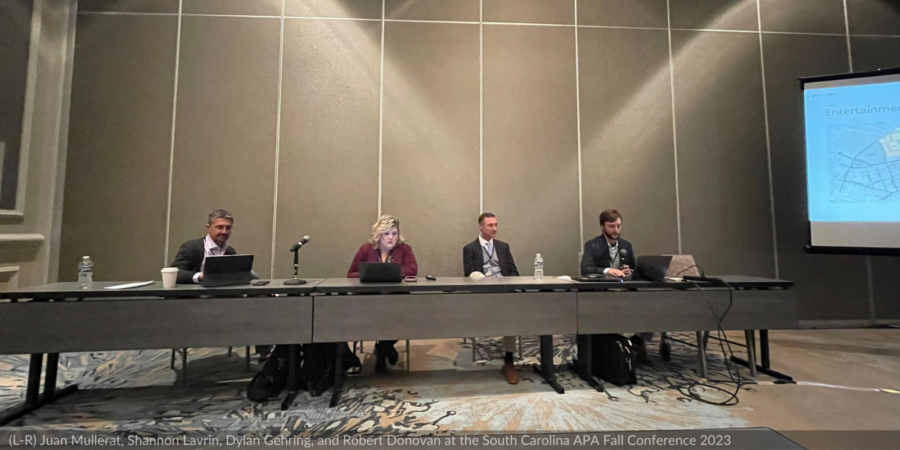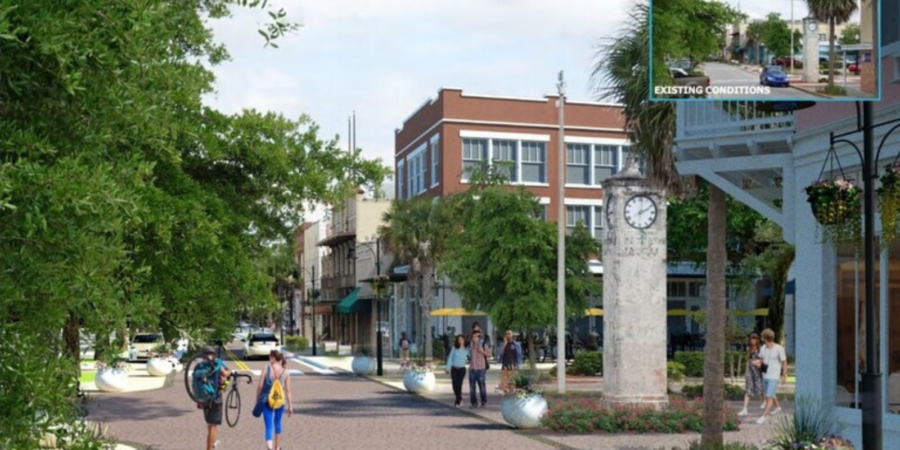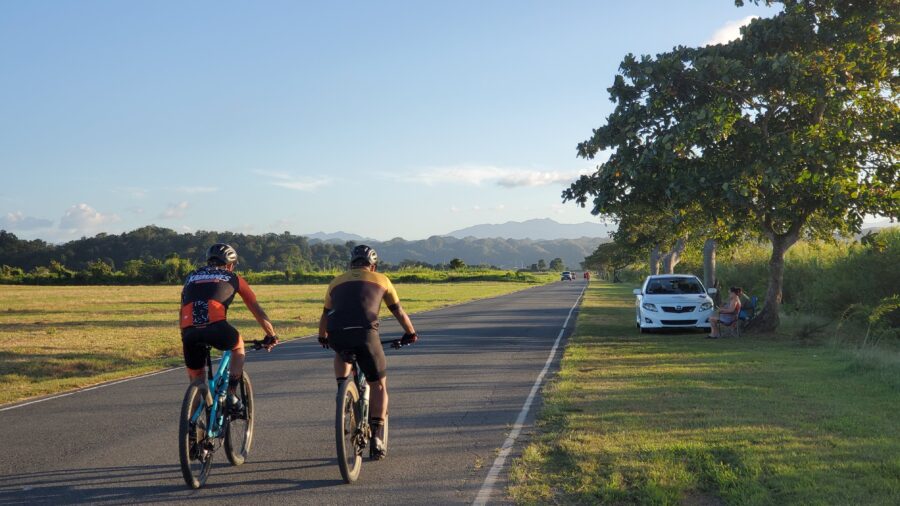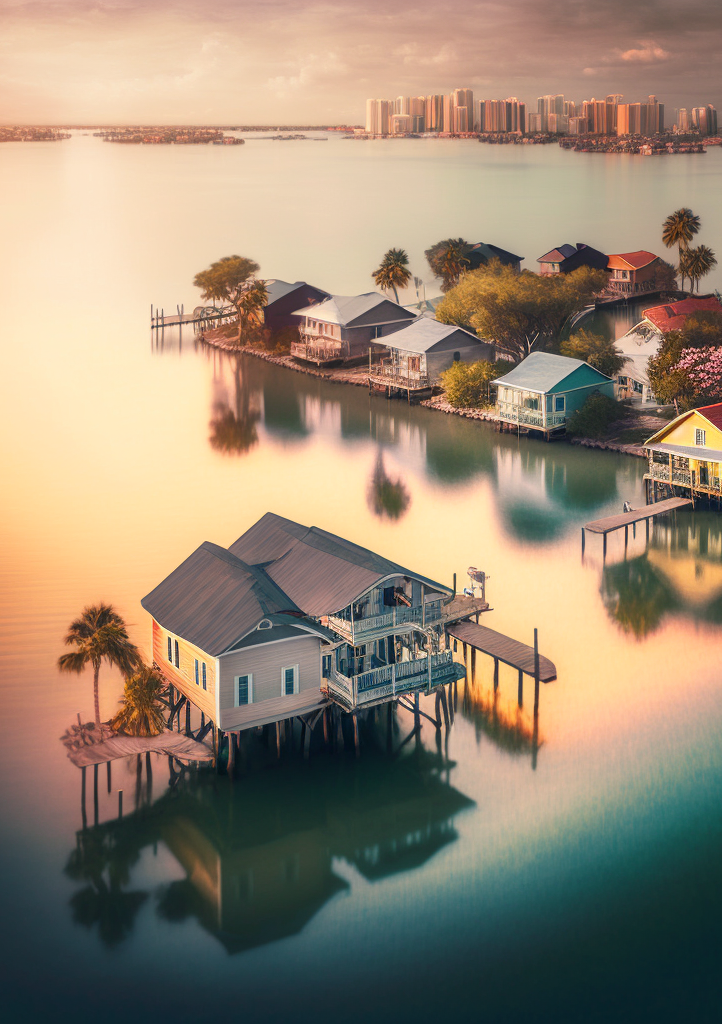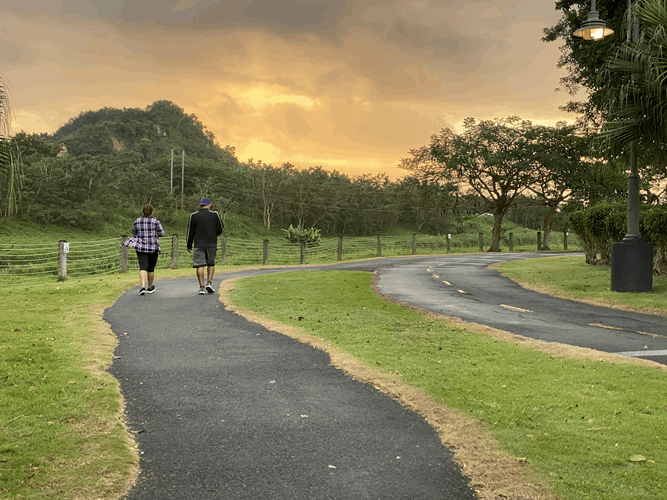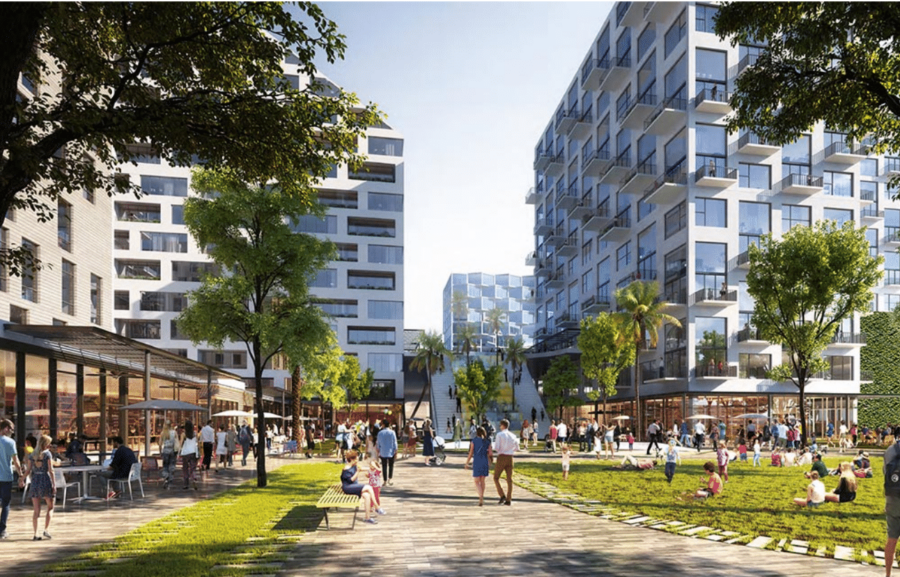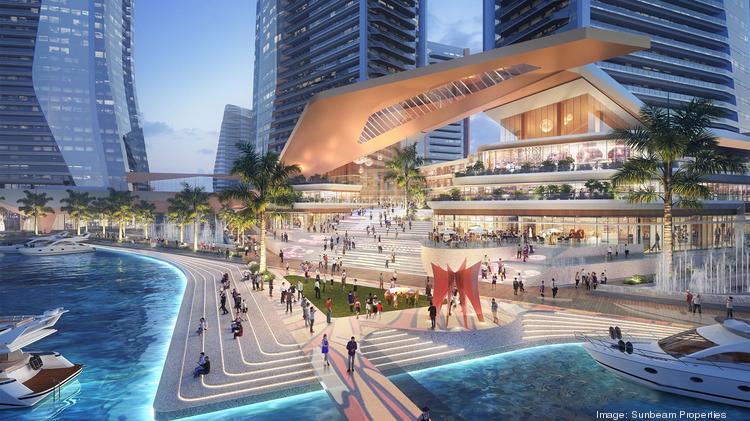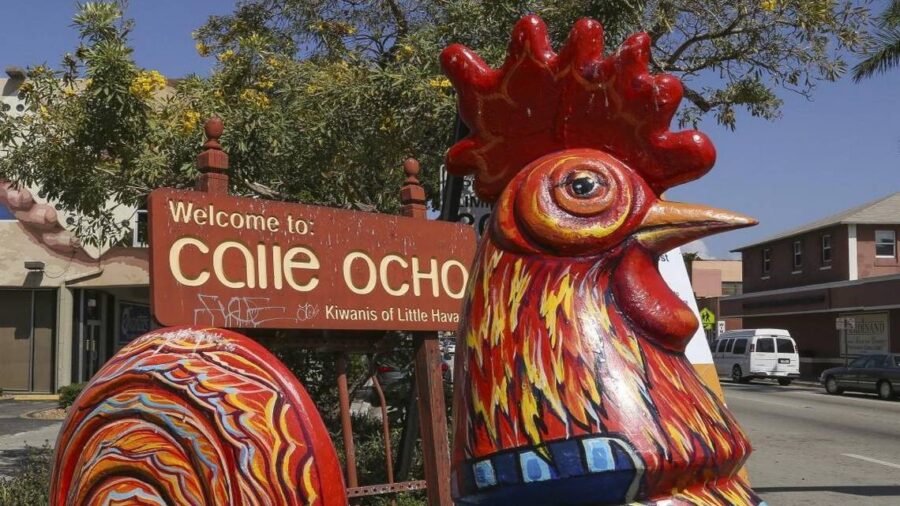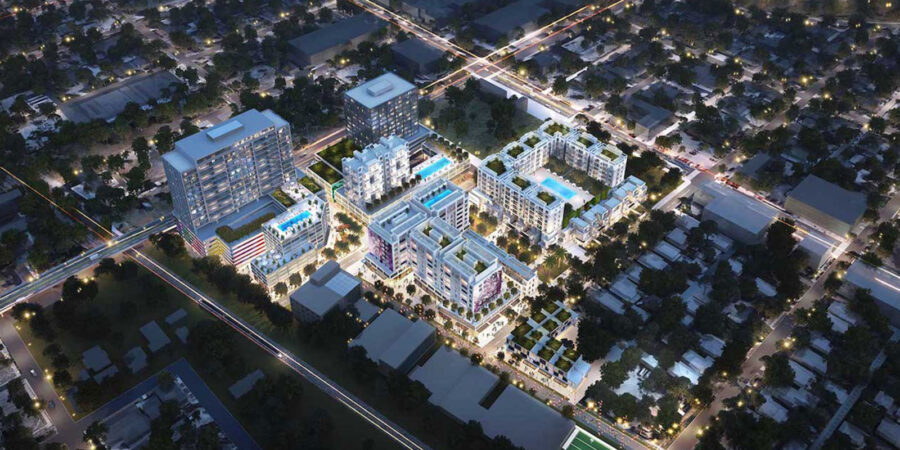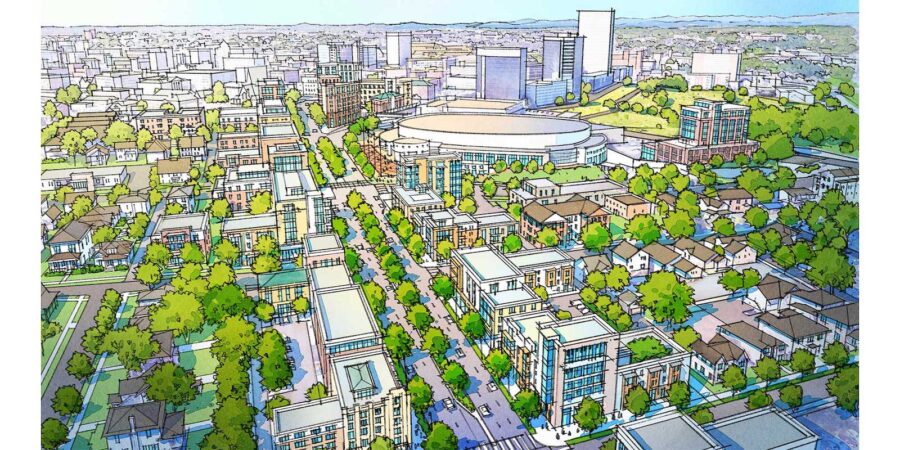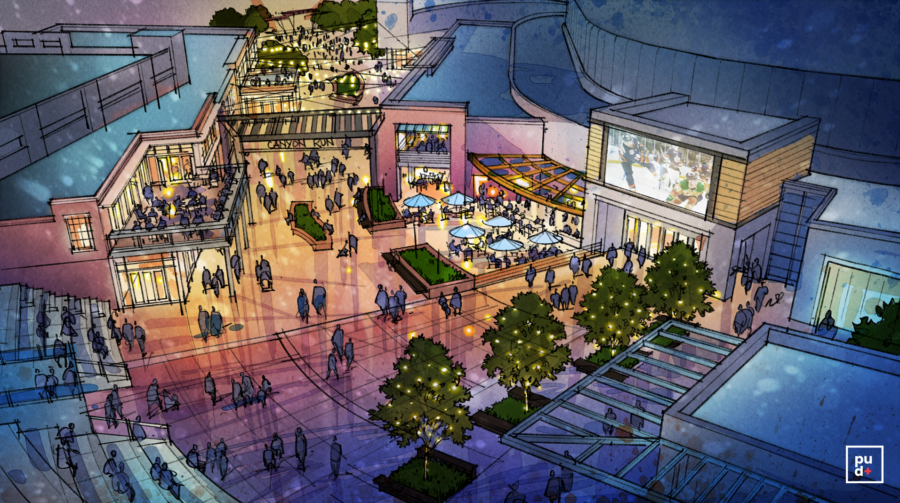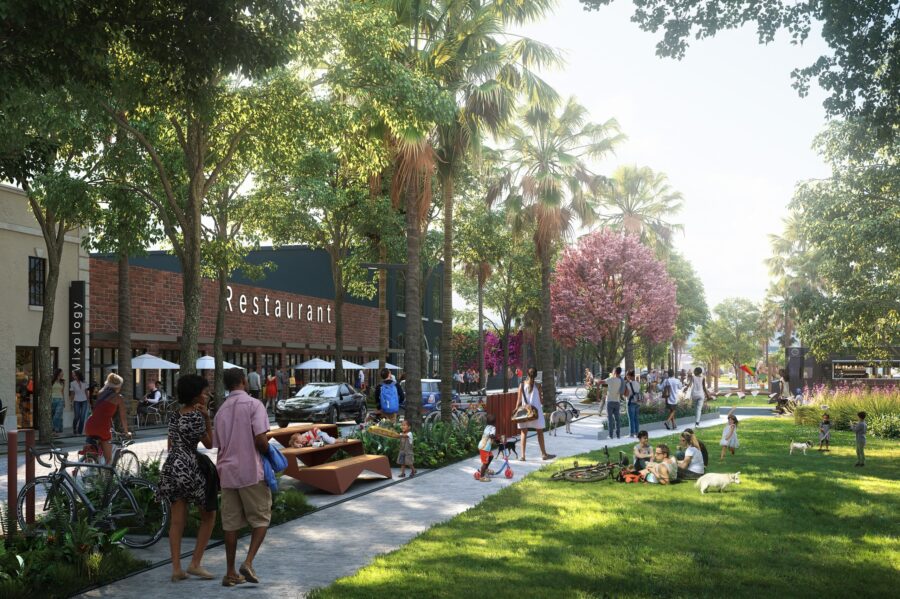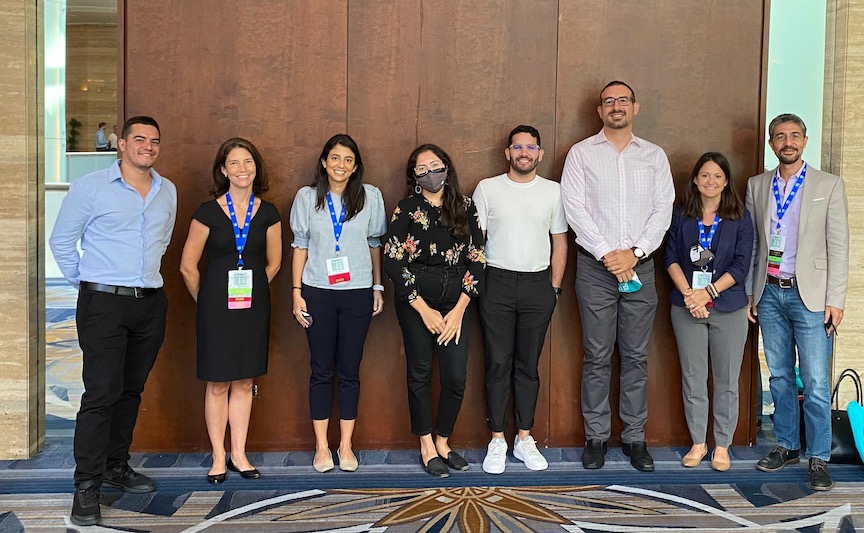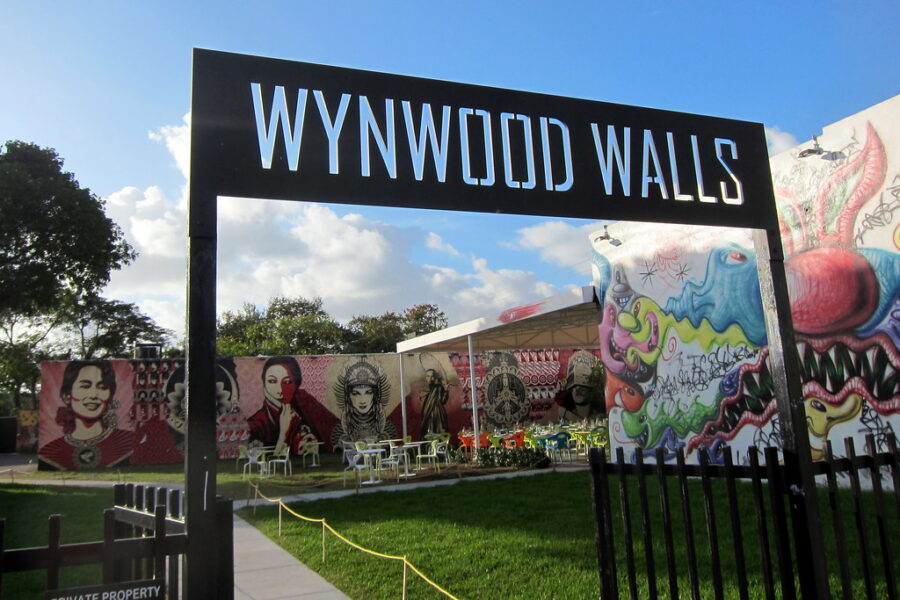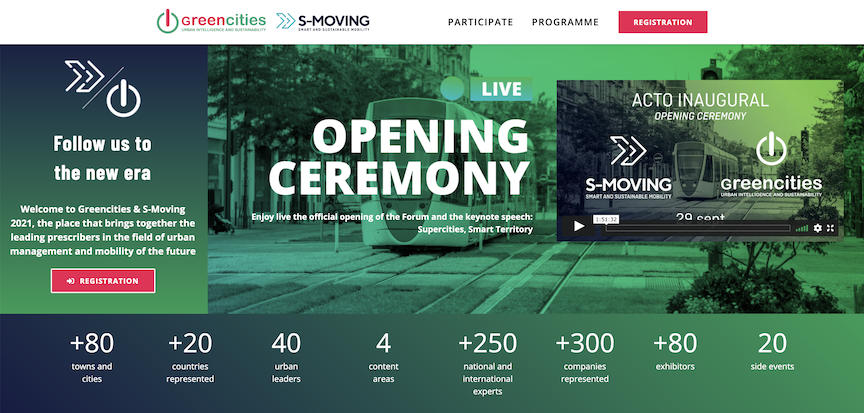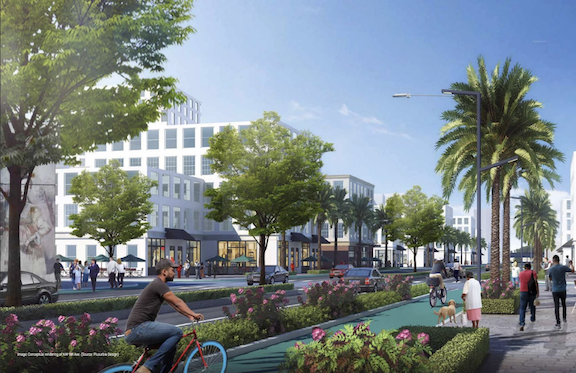our
news
AWARDS, ACCOLADES, PUBLICATIONS AND NEWS.
Are you passionate about shaping resilient, vibrant communities? Do you believe in the power of innovative, context-driven design? Plusurbia Design is looking for a creative Urban Designer to join our dynamic team.Position: Urban DesignerLocation: Miami, FLType: Full-TimeResponsibilities:Develop innovative urban design solutions for diverse projects, including master plans, community development, and public space design.
Collaborate with interdisciplinary teams to integrate planning, architecture, and landscape architecture into cohesive urban designs.
Conduct site analyses, conceptual design, and detailed design work, ensuring alignment with project goals and Plusurbia's philosophy.
Engage with communities and stakeholders to gather insights and incorporate feedback into design processes.
Prepare and present design proposals, reports, and visualizations to clients and public agencies.
Stay updated on urban design trends, zoning regulations, and sustainable practices to bring fresh ideas to projects.Required Qualifications and Skills:Bachelor’s degree in Architecture, Urban Design, or related field.
Strong portfolio demonstrating experience with urban design projects, including master plans, public spaces, and community developments.
Proficiency in design software such as AutoCAD, Adobe Creative Suite, Lumion, SketchUp, and GIS.
Excellent verbal, written, and graphic communication skills, with the ability to articulate design concepts clearly.
A passion for sustainable, resilient, and community-oriented design.
Self-motivated with good time management skills.Why Plusurbia Design?Plusurbia Design is an award-winning urban planning and design firm dedicated to creating inclusive, sustainable, and context-sensitive urban spaces. We work closely with communities, stakeholders, and local governments to deliver projects that enhance the quality of life and reflect the unique DNA of each place we touch. Our approach is rooted in the principles of placemaking, community engagement, and sustainable development.Be part of a growing, forward-thinking firm that values creativity, sustainability, and community impact.
Work on transformative projects that make a real difference in urban environments, from Regional Comprehensive plans to neighborhood and district revitalization and design.
Collaborate with a talented and passionate team in a supportive, innovative work environment.
Enjoy opportunities for professional growth and career advancement.Salary and Benefits:Salary – commensurate with experience and competitive in the marketplace.
401K ‘Elective Safe Harbor’ – Up to 3% of salary.
End-of-year performance-based bonus.
Benefits include personal days off, holidays, individual medical, dental, and vision insurance, and short—and long-term disability insurance.How to Apply:We'd love to hear from you if you're ready to contribute to meaningful urban design projects and grow with a leading firm!Send your resume, portfolio, and cover letter detailing your experience and why you’re a great fit for Plusurbia Design to careers@plusurbia.com.Applications that don't meet the requirements will be dismissed. Format the email with the subject line ‘Urban Designer Position.’
Portfolio, Resume, & Cover Letter must be in PDF format attached to the email. Deadline: Applications will be accepted until September 25th, 2024.Plusurbia Design is an equal-opportunity employer. We celebrate diversity and are committed to creating an inclusive environment for all employees.Join us in shaping the cities of tomorrow—today!
const canvas = document.getElementById('snowCanvas');
const ctx = canvas.getContext('2d');function resizeCanvas() {
canvas.width = window.innerWidth;
canvas.height = window.innerHeight;
}
window.addEventListener('resize', resizeCanvas);
resizeCanvas();const flakes = [];
const flakeCount = 80; // number of snowflakes
for (let i = 0; i < flakeCount; i++) {
flakes.push({
x: Math.random() * canvas.width,
y: Math.random() * canvas.height,
r: Math.random() * 4 + 1, // radius
d: Math.random() * flakeCount
});
}function drawFlakes() {
ctx.clearRect(0, 0, canvas.width, canvas.height);
ctx.fillStyle = 'white';
ctx.beginPath();
for (let i = 0; i < flakes.length; i++) {
const f = flakes[i];
ctx.moveTo(f.x, f.y);
ctx.arc(f.x, f.y, f.r, 0, Math.PI * 2, true);
}
ctx.fill();
moveFlakes();
}let angle = 0;
function moveFlakes() {
angle += 0.01;
for (let i = 0; i < flakes.length; i++) { const f = flakes[i]; f.y += Math.pow(f.d, 0.5) + 1; f.x += Math.sin(angle) * 2; if (f.y > canvas.height) {
f.y = 0;
f.x = Math.random() * canvas.width;
}
}
}setInterval(drawFlakes, 30);
Sharing highlights from the Miami Book Fair on November 23, where Juan Mullerat, Principal of Plusurbia Design, joined the distinguished panel, “Cities, Mobility, and a Vision for a Better America.”
Presented by the Citizens' Independent Transportation Trust, the session brought together leading voices in urbanism: Angie Schmitt, Wes Marshall, Juan Mullerat, and Charles “Chuck” Bohl, with Victor Dover, FAICP, serving as moderator. The panel delivered an insightful and forward-looking conversation on the future of cities, mobility, and community-centered development.
During the program, Juan also presented his new book, The Urban Calendar: 365 Days That Shaped the Urban World, a collection of significant moments in urban history that continue to influence how cities grow, adapt, and thrive.A recording of the full session is available for viewing here:
TOA BAJA, PR — August 2025 — Community Engagement in Full Swing! ❤️
Our team in Puerto Rico has successfully completed the first four community meetings as part of the Toa Baja Safety Action Plan—and the momentum continues to build. With four additional sessions planned, community engagement remains at the heart of this initiative.
We’re honored and inspired by the enthusiastic participation of residents and local stakeholders who are deeply committed to creating safer streets. Their insights, lived experiences, and thoughtful recommendations are shaping a plan that truly reflects the community’s priorities.These meetings represent a key step toward building a collaborative vision for safer, more accessible neighborhoods. At Plusurbia, we believe meaningful change begins with listening—and the voices of the community have been clear and impactful.Thank you to everyone who has taken part in the process so far. Your input is the foundation of this effort, and we’re excited to continue working together to create safer, more connected communities.Scroll down for highlights from the events![gallery size="medium" columns="2" link="file" ids="28647,28646,28645,28644,28638,28641,28642,28643"]
Miami's identity is etched in its past. A vibrant history that continues to shape the Magic City’s present and future.
This year, Plusurbia partnered with the Miami-Dade County's Office of Historic Preservation (OHP) to develop four interactive StoryMaps that bring the county’s vibrant history to life. Each StoryMap explores a unique chapter in Miami-Dade’s development, from agriculture and architecture to land development and preservation, illustrating how the past continues to influence the region’s culture, economy, and urban form.
These StoryMaps aim to make local history more accessible to residents, students, and visitors alike—inviting everyone to explore, learn, and connect with the stories of our shared past.
You can explore the StoryMaps directly via the links below:Historic Preservation in Miami-Dade County
Miami-Dade County’s Architectural LegacyThe History of Agriculture in Miami-Dade County
1920s Themed Developments in Miami-Dade CountyAs part of this effort, Plusurbia also worked with the County and local municipalities to create a Historic Resource Guide. The guide provides residents and property owners with a detailed overview of every locally designated historic site in Miami-Dade County and how preservation works at the local level.
You can view or download the Historic Resource Guide here: Miami-Dade Historic Resource Guide (PDF)
Adopted in 2010, Miami 21 was the first form-based zoning code applied to a large U.S. city. It replaced outdated, car-centric regulations with a framework prioritizing walkability, mixed-use development, and cohesive neighborhood design. Miami 21 has since become a reference point for cities across the country exploring New Urbanism principles to guide growth in the 21st century.
Juan Mullerat, Principal of Plusurbia, has long championed zoning as a tool for equity, resilience, and livability. joined a distinguished panel with Lizz Plater-Zyberk, Code author David Snow, City of Miami's Planning Director, and Melissa Tapanes Llahues, Land Use Attorney, to reflect on Miami 21’s legacy, its evolving role in shaping the built environment, and what’s next for cities embracing form-based codes.
The discussion examined how Miami 21 has influenced urban design, transportation, housing, and public spaces over the past 15 years, while also looking ahead to the evolving needs of a dynamic and growing city.
Watch the full panel discussion here:
We are proud to share that Juan Mullerat, Principal and Founder of Plusurbia, has joined the Board of Directors of The Underline Conservancy.
The Underline is reshaping how Miami experiences public space, transit, and neighborhood connections. As a transformative urban project, it creates a linear park and civic destination that brings together mobility, recreation, and culture—making Miami a more connected and livable city.
Juan’s new role reflects Plusurbia’s dedication to contextual design, community engagement, and long-term planning. His experience in advancing resilient, walkable, and inclusive urban environments will help support The Underline’s continued growth as a civic space that strengthens neighborhoods and fosters connection across Miami.
On June 10, 2025, the Hialeah City Council unanimously adopted the Hialeah 2050 Master Plan, marking a major milestone for one of South Florida’s most vibrant and evolving cities. The planning process, coordinated by Plusurbia in collaboration with the city and partners, guided the development of this transformative, long-range vision.Built over nearly two years of collaboration and community engagement, the plan reflects the voices of residents, stakeholders, and local partners. Grounded in equity, connectivity, walkability, and economic opportunity, the Hialeah 2050 Master Plan provides a community-first roadmap to guide the city’s growth through 2050 while fostering neighborhood pride and enhancing the quality of life for all residents.We extend our gratitude to the City of Hialeah Municipal Government and to Debora Storch and Claudia Hasbun, AICP, for their leadership and trust throughout this process. We also thank our exceptional project team, including Urbe Studio, EXP, Corradino, and CÚRE & PENABAD, whose expertise helped bring this vision to life.Finally, thank you to all residents, stakeholders, and partners who contributed their voices, ideas, and energy to shape this plan. Together, we are building Hialeah’s future.Explore the full plan at: www.hialeah2050.com
Article was originally published in the Coconut Grove Spotlight
September 3rd, 2024 When my son gets hurt, I console him with the phrase “sana, sana, colita de rana,” which loosely translates to "heal, heal, little frog's tail." It makes no real sense, but it always makes him feel better. However, when he’s genuinely injured, we seek professional help.Similarly, the "Live Local Act" (SB102) bill, enacted with minimal input from city planners and architects, seeks to address Florida's housing crisis with good intentions but without professional precision and foresight. This law will reshape our cities by streamlining development and promoting higher-density housing in commercial and industrial areas without the expert insight to understand its impact on our communities and the essential services required for healthy urban strategic growth. It’s akin to saying, “Sana, sana, SB102 de rana,” hoping the housing crisis will be resolved without side effects.When tackling affordability, it is vital to prioritize healthy strategic growth. The bill’s authors, though knowledgeable about zoning, would have benefited from a deeper understanding of how cities function, their unique qualities, histories, and diverse characters. However, with 411 municipalities and over 10,000 neighborhoods in Florida, who could cater to the specific needs of each one? No one can, and that’s why a blanket approach to affordability is ill-conceived.Height and density aren't suitable everywhere. SB102 neglects resilient measures by promoting large-scale development in vulnerable coastal and flood-prone areas. It neglects essential infrastructure like roads, emergency services, schools, and parks—elements covered in Comprehensive Plans to guide strategic growth and ensure livability. Placing housing indiscriminately in commercial and industrial zones risks overwhelming infrastructure, worsening congestion, and straining utilities. Without careful planning and provision of these services, new affordable developments will be built in the wrong places without proper services, amplifying the issues SB102 aims to resolve.A critical flaw in SB102 is assuming that density requires height. Florida’s 1920s and 30s small-scale apartments show that small, high-density buildings exist compatibly within neighborhoods. With limited parking and minimal amenities, these buildings have low HOAs and construction costs and maintain affordable rents. For instance, Miami's 1920s central corridor buildings, like 2401 Overbrook St in Coconut Grove, achieve 60-150 dwelling units per acre with just 2-3 stories, blending seamlessly into the urban fabric. Options like ADUs, triplexes, and courtyard apartments further enhance neighborhood diversity and housing availability. This doesn’t mean less housing, but more integrated rather than concentrated in towering structures. Instead of SB102’s ‘super-size-it’ approach, efficient, quality affordable housing works better when introduced strategically throughout a community.By prioritizing maximum heights and large-scale developments, SB102 overlooks the diverse housing types that have historically made our neighborhoods vibrant and inclusive. These housing types offer various densities while maintaining a harmonious scale, ensuring that buildings complement rather than overshadow each other. The bill needs to provide solutions that address affordability while preserving neighborhood character. Large-scale developments often require extensive land assemblies, encouraging land banking, speculation, and displacement of existing residents and businesses, ultimately exacerbating the problems the law aims to solve—particularly in hyperinflated markets—undermining the character and scale of established neighborhoods.While the legislation encourages development near transit by reducing parking requirements, it must prioritize it. This is an opportunity to encourage growth around transportation nodes and corridors, gradually decreasing height to match the existing neighborhoods’ character with smaller, scaled-down infill projects that blend seamlessly into the urban fabric. Such a strategy would preserve the character of lower-rise areas, contributing to balanced growth and maintaining community integrity while accommodating new residents to support public transit. This approach would reduce congestion and promote sustainable transit-supportive environments, motivating cities to enhance transportation options and reducing car dependency and the need for onerous parking mandates.The law must seriously address the impact of parking on housing affordability. Mandating parking on any new development imposes significant financial burdens, driving up the cost of housing and making units less affordable. While parking may be desirable, especially in areas with limited public transit, existing stringent parking requirements increase development costs and exacerbate affordability issues. Parking should be optional, not mandatory. Numerous cities nationwide are eliminating parking minimums. Although not all cities may be ready for this, SB102 should require parking exemptions, at least in all TOD areas within half a mile, allowing the market to determine parking needs and compelling cities to invest in alternative mobility solutions. Parking should be considered an amenity, not a requirement, as the cost of structured parking—averaging $30,000 per space (or $60,000 if two spaces are required)—inevitably results in higher housing prices.A more profound issue lies in how 'affordable' is calculated. The current method using Area Median Income (AMI) is too broad and often fails to reflect real household economics, particularly in gentrifying or economically diverse neighborhoods where wealthier newcomers skew the median income. As a result, the 'affordable' units created under this legislation are often still out of reach. For example, in Miami-Dade, 'affordable' rents at 120% AMI are set at $2,554 for a one-bedroom and $3,063 for a two-bedroom unit. To afford this under HUD guidelines—where housing costs should be no more than 30% of income—a family of three would need to earn $122,520 annually, far above the county's median income of $79,400 and even more unrealistic in areas like the West Grove, at $50,000. Without a more precise approach considering local economic conditions, the housing produced under SB102 will remain inaccessible to those who truly need it, creating low-end market units rather than genuine affordable housing.Localized income assessments would ensure more realistic AMIs to achieve true affordability. The current thresholds could exacerbate displacement, pushing existing residents out of their communities. A fairer, more calibrated AMI and access to essential services like schools, parks, and transportation are crucial for creating sustainable and equitable housing solutions. Without these adjustments, SB102 risks perpetuating the housing crisis and worsening inequality.The law has sparked concerns among urban planners and local governments by overriding zoning laws and imposing a one-size-fits-all approach that disregards the unique needs of individual communities. This preemption limits local authorities' ability to develop strategies that align with their strategic growth plans, neighborhoods' character, and historical context, creating tension between state and local objectives.Much like the issues that led to the 1776 Declaration of Independence, where the 'consent of the governed' was crucial, this top-down approach from Tallahassee highlights a significant disconnect. Lawmakers in the state capital are not and cannot be attuned to the nuances of life in every community, much less in South Florida. Given the distinct challenges and opportunities here, perhaps it’s time to consider whether South Florida requires more autonomy to ensure that development policies are crafted with a deep understanding of our region’s unique context and needs.
By Andres Viglucci
June 22, 2024 5:00 AMMiami’s Wynwood may be the hottest, hippest neighborhood in America’s hottest city: A dynamic urban fusion of repurposed industrial buildings and warehouses interspersed with new, low-rise buildings housing shops, bars and restaurants, offices and apartments, all of it steeped in artful design and curated graffiti murals. Its success is no accident. The reinvigorated Wynwood, once a derelict industrial zone, is the deliberate result of unique planning guidelines and development limits painstakingly laid out a decade ago by district property owners and city of Miami planners. The special Wynwood regulations are backed by a distinct vision — for a dense yet human-scaled alternative to the new high-rise forests of Brickell and Edgewater. But just as they begin to bear fruit, the carefully laid plans for Wynwood are threatened by a controversial new state law, the Live Local Act, which overrides local building controls and encourages developers to supersize projects in exchange for setting aside apartments as ostensibly affordable housing. Critics say Live Local is a giveaway to developers and the promised affordable housing is anything but that.Read more at: https://www.miamiherald.com/news/local/community/miami-dade/article289287445.html#storylink=cpy
Dade Heritage Trust (DHT) proudly announces the launch of its new podcast, "Miami Preserves." This podcast, produced in collaboration with DHT’s Historic Places, Green Spaces education program, delves into the rich tapestry of Black history in Miami. Through captivating interviews and archival recordings, "Miami Preserves" illuminates the stories, struggles, and achievements of the African American community in this vibrant city.Inaugural Episode and Series LaunchThe inaugural episode features our very own Historical Preservation Specialist, Megan Mclaughlin. Listen to this insightful discussion on America's African American history, kicking off a content-rich four-part series. The trailer for this eagerly anticipated series has already been released, generating excitement for the first episode, which will be available on all major podcast platforms starting June 26, 2024.Listen and SubscribeListeners can access the trailer and subscribe to "Miami Preserves" here. This series aims to celebrate Miami’s African American cultural heritage, preserving and honoring the community's significant contributions to the city’s history and identity.Join the JourneyJoin DHT on this compelling journey as "Miami Preserves" brings to life the stories that have shaped the African American experience in Miami. Don't miss this unique opportunity to connect with the past and celebrate the vibrant cultural heritage that continues to enrich the city.
Belmont, NC–Plusurbia is thrilled to announce the completion of a successful multi-month public engagement campaign in the City of Belmont. Featuring eight community workshops, informative presentations, Q&A, small group meetings and an online survey, the initiative provided essential guidance for the city’s Comprehensive Land Use Plan update.Altogether, our team received nearly 1,600 comments on Belmont’s opportunities, challenges and aspirations, far exceeding community involvement during the last plan update in 2018. We also invested over two weeks of in-person time, talking with community stakeholders and getting to know Belmont, foraging a deeper connection with residents, business owners and community leaders.
The Puerto Rican government is making strides in preserving its rich rail heritage with the introduction of House Bill (PC 2141). Filed by five representatives, this bill seeks to enshrine the preservation of 19th and 20th-century railroad routes as public policy. It also directs government entities to create a non-motorized transportation route for historical, cultural, and ecological tourism, proposing the development of the Borinquen Trail.Historical SignificancePC 2141 highlights that by the late 19th century, Puerto Rico boasted approximately 1,000 kilometers of railroads, positioning it as one of the regions with the most extensive railroad networks per square kilometer. These railroads were integral to the island’s development and historical landscape.Efforts by Plusurbia DesignPlusurbia Design has been working to preserve this legacy since 2018. The Borinquen Trail encompasses a 426-mile corridor aimed at safeguarding the historical importance of Puerto Rico’s old train tracks. This initiative seeks to enhance the island’s cultural heritage, support sustainable tourism, and engage the community.The Borinquen Trail: A Vision for the FutureThe Borinquen Trail will feature a multimodal ecological route designed for biking and pedestrian use, traversing the Puerto Rican archipelago. It will link various natural, historical, cultural, tourist, and gastronomic attractions along the old rail routes. This pioneering project promotes health, stimulates economic and tourist activity, and fosters a vibrant cycling and pedestrian community, all while preserving and celebrating Puerto Rico’s natural, historical, and cultural heritage.
On May 8 and 9, 2024, Miami hosted an insightful walkshop titled "Metamorphosis of a District: How the Design District, Midtown, and Wynwood Emerged as Miami's Preeminent Revitalization Experiments." This event, held as part of the National Association of City Transportation Officials (NACTO) Conference, was co-led by urban planning experts Juan Mullerat, Graham Jones from the City of Miami, and Cesar Garcia-Pons of Garcia+Pons and Associates, LLC.
This year has seen the birth of new connections, the strengthening of communities, and the laying of foundations for more resilient cities. Together, we've embarked on innovative projects that have not only shaped our path but have also contributed to the positive transformation of the spaces we touch. [video width="1920" height="1080" mp4="https://plusurbia.com/wp-content/uploads/2023/12/20231214-PUD-Holiday-Card-Photocard.mp4"][/video] We extend our heartfelt gratitude for your collaboration, support, and shared commitment to building a better future. May the holiday season bring you joy, peace, and moments of well-deserved rest.
Wishing you and your loved ones a festive holiday season and a prosperous New Year!
Principal and founder of Plusurbia, Juan Mullerat, took the stage on Wednesday, December 05, at Nova Southeastern University to address an esteemed audience of elected officials and senior staff during the ULI Elected Official & Public Sector Density Workshop.The workshop, organized by the Urban Land Institute (ULI) Southeast Florida/Caribbean Chapter, served as a platform to share insights and expertise on the critical topic of density in urban planning. The event aimed to provide a comprehensive understanding of the challenges and opportunities associated with density from the perspective of elected officials and public sector leaders.Mullerat's presentation focused on the intricacies of managing density within the context of urban development. He addressed the engaged crowd with a wealth of knowledge, drawing from his extensive experience in urban planning and development.
In a captivating session titled "Reimagining Greenville's Gateway: A Community-initiated Plan," urban design firm Plusurbia took center stage at the South Carolina APA Fall Conference. The event, held at the Westin Hilton Head Island Resort & Spa, featured Plusurbia's Juan Mullerat and Dylan Gehring, alongside key collaborators: Greenville’s City Manager, Shannon Lavrin, and local business owner and stakeholder Robert Donovan.The focal point of the session was the groundbreaking 2022 project, the "East Gateway District," a transformative initiative aimed at revitalizing Greenville's Gateway Area. The Community Vision Plan, presented by the Plusurbia team, emerged as a strategic blueprint that embraces the neighborhood's unique assets while implementing innovative strategies to seamlessly reconnect the built environment with the adjacent downtown.Revitalization began with the City’s downtown, and in the decades since, has grown outward from there in every direction; that is, except for the Gateway Area. Instead, Greenville’s most popular entrance, seeing 54,000 vehicles move through it daily, has continued to be defined by a series of disconnected development patterns, and includes a National Register-listed Historic Neighborhood, the City’s Arena, and the County’s Law Enforcement Center.Out of this, grew a community movement to plan for the area’s future, featuring a multimodal corridor, an entertainment district, and context-sensitive infill development, solidifying the connections between this new node and downtown.Plusurbia is grateful for the large turnout and exceptional questions, helping illustrate how the privately led collaboration with the City made this project different, and the key timeliness of completing the plan before the adoption of Greenville’s new development code.
Tactical urbanism is part of the toolkit communities have to transform their streets, fostering innovation, awareness of pedestrians and micro-mobility on the road, and community belonging. Tactical urbanism revitalizes neglected spaces by empowering citizens to reshape their surroundings with small-scale, quick interventions. It cultivates a powerful civic pride, driving positive social change and sustainable development.At Plusurbia, we believe that tactical interventions can lead to long-term change. Establishing a long-term vision is critical before Tactical Urbanism interventions are considered. We work with our clients to create roadmaps that address communities' needs and create lasting change. Exercises such as mobility master planning, corridor studies, and comprehensive planning, are critical steps in generating the long term vision for mobility in any given city or township.Comprehensive and mobility planning are a careful balance between enhancing the existing public realm while anticipating future development needs. We combine best practices in complete streets design with local knowledge of network planning. As such, site visits and community outreach are core to the process of generating viable solutions that work for everyone. A successful study takes care to look beyond crash data analysis, towards travel patterns and safety audits to identify community needs that match community desires and support economic development.These planning strategies generate high-level recommendations, such as corridor selection and prioritization, necessary for the funding, design, and construction phases of projects. In addition, long-term visions are key to define objectives that lead to short-term implementations, such as pilot projects. This is where tactical urbanism is key, by creating projects that are implementable in a short period of time, which is key to demonstrate progress. This is why we are using tactical urbanism to advance the Borinquen Trail, an island-wide trail network for Puerto Rico.Tactical urbanism facilitates practitioners and governments, along with communities, to partner on advancing the implementation of soft treatments, such as pedestrian crosswalks, bicycle route symbols on pavements, and signage that will be the base for a future street improvements through reconstruction. Most of all, it is empowering to communities that wish to support safety advocacy efforts, and this empowerment leads to public policy success as communities adopt a culture of safe driving, rolling, and walking. As an added bonus, communities may adopt these tools as a means to continue the conversation beyond pilot projects, and these desires can be supported by governments through street improvement permitting and adopt-a-street initiatives.
Lake Wales Main Street was among winners of 2023 Florida Main Street Awards, which were announced during the Preservation on Main Street Conference in Ocala last week.Florida Main Street is a program administered by the Division of Historical Resources under the Florida Department of State, which currently oversees 57 communities throughout the state. By implementing the National Main Street Center's Four-Point Approach, Florida Main Street encourages economic development within the context of historic preservation through the revitalization of Florida's downtowns, cultural and heritage districts, which it describes as "the community's heart and soul."Lake Wales won a "Distinctive Preservation Award" in recognition of downtown mixed-use design standards in Category A. Those standards were recently adopted by the City of Lake Wales, and are intended to protect the historic designs of the downtown district while encouraging residential and new commercial uses that will reflect that history. The new standards were among recommendations contained in the Lake Wales Connected plan that have been adopted by the city commission.A variety of awards were given to programs across the state in recognition of individuals and projects ranging from single landmark building preservation to special events.Florida Secretary of State Cord Byrd was at the ceremony to present awards to this year's winners who achieved outstanding results in historic preservation and commercial activity through the Florida Main Street program."This year's winners have shown a remarkable commitment to preserving the distinct heritage, traditions, and culture that make their historic downtowns attractive places for commerce," said Secretary Byrd. "The Department of State is proud to showcase these success stories in the preservation and revitalization of Florida's historic downtowns."
On Celebrate Trails Day (this Saturday, April 22), Rails-to-Trails Conservancy (RTC), the largest U.S.-based trails advocacy organization, showcases the impact of trails and trail systems on people, places and the planet by encouraging everyone to get outside on trails.Joining this year's celebration is the Borinquen Trail in Puerto Rico as part of its partnership with RTC. In addition, Borinquen Trail will collaborate with RTC on technical assistance initiatives and advocate for funding sources and best practices in trail implementation. Since 1992, RTC has helped advocate for more than $20 billion in funds to support more than 40,000 trail and active transportation projects throughout the nation.The Borinquen Trail is a 600-mile multi-use trail for walking and bicycling, endorsed by RTC. The trail repurposes former railroad right-of-way encircling the island, including breathtaking beachfront and historic tunnel segments. The route will connect 22 municipalities and, once fully implemented, could generate up to $673 million in annual user spending through direct, indirect, and induced economic effects. Adding to this sum will be the growth and creation of businesses associated with the outdoor recreation industry, including restaurants, sports equipment and bicycle rental establishments, history and tourism groups, hotels, and more. The trail could support between 4,708 and 7,294 jobs and is expected to spur an annual $21-41 million in new island and federal tax income.The implementation of the Borinquen Trail has already begun, a critical step in the island’s journey to a more sustainable environmental, and resilient future. Last month, planning for the Borinquen’s pilot project in Playa de Ponce (in the south of the island) was completed, and new local partners are joining to drive construction and designation of the trail. When finished, it will establish a multimodal connection between two historic centers: Playa de Ponce and the municipality’s town core.The Borinquen Trail has the potential to significantly increase tourism island-wide, create thousands of jobs, and improve public health across Puerto Rico. With the rail-trail already in motion, there is much to look forward to as its route unfolds over the coming years. To learn more and support this effort, visit https://www.rutaborinquen.org.Celebrate Trails Day is the annual celebration of the spring trail season, recognized on the fourth Saturday in April. The national celebration is organized by RTC, the largest U.S.-based trails organization—with a grassroots community more than 1 million strong. RTC is dedicated to building a nation connected by trails, reimagining public spaces to create safe ways for everyone to walk, bike and be active outdoors. Follow #CelebrateTrails on social media for updates, and connect with RTC at railstotrails.org and @railstotrails on Facebook, Twitter and Instagram.
INTERVIEW: Juan Mullerat
Date: 20230315
Can you share more about Plusurbia and the kinds of projects your team focuses on?
At Plusurbia, we focus on making cities better places to live and work by improving walkability, affordability, and context. Our projects range from creating walkable neighborhoods with a mix of housing types to creating inclusive public spaces that can be enjoyed by people of all ages and backgrounds. We also specialize in leveraging data to create targeted solutions for communities facing gentrification and displacement, such as developing tools to help assess the potential effects of development decisions on existing residents.Our firm has always balanced private, public, and pro-bono projects. We work for municipalities or the state, we work with private developers and property owners, and then, this is the exciting side of our studio: we get involved with non-profits or communities with limited or no budgets to help them improve their neighborhoods. We are currently involved in Ruta Borinquen, a not-for-profit effort to revitalize communities along a 426-mile stretch of the former railway in Puerto Rico. We are designing and implementing pocket parks in various neighborhoods, and we are working with some communities experiencing very aggressive displacement.Our team is committed to engaging local stakeholders throughout the planning and implementation process so that all voices are heard and community vision prevails. Ultimately, we aim to ensure that all communities become safe and accessible places with robust amenities and the tools to improve lives.
Gentrification and climate change are both at the forefront of planning. However, the combination of the two, climate gentrification, is still a fairly new term and a concept we're just now trying to wrap our minds around.
For our listeners, can you explain what climate gentrification means and give examples of how you've seen it play out in Miami or other cities?
Last January, our team collected information for an ongoing economic impact analysis of the trail, which will provide hard numbers to prove its value. Dylan Gehring and David Soto visited existing trail segments that will one day be connected and integrated into the future 595 mile Borinquen Trail. They ran trail counts every day during peak-use times and collected trail user spending data by conducting brief surveys. They also examined portions of the old railroad embankments and bridge systems that are not currently trails. Among the trails surveyed, Paseo Lineal Río Bayamón proved to be the most popular and highest-quality segment.Dylan and David conducted seven days of consecutive data collection across five trails (2 trail segments were repeated to determine the factor of difference between weekdays and weekends) which garnered about 550 responses. The selection of the trails studied was tied to the necessity of having an example of each typology: urban, suburban, rural, beachfront, and natural preserve. This data will be used for an economic impact analysis and to continue to assess and design future segments of the Borinquen Trail.
The Next Miami: Article
December 22, 2022Renderings have been released for Upland Park, a $1b transit-oriented development planned near the Dolphin Mall.
The development will be “the first truly viable alternative to automobile commuting,”. Upland Park is being purpose-built for integration with the upcoming east-west transit corridor, according to the developer. The community will have expedited access to major employment areas such as Miami International Airport, the Health District, Downtown and Brickell, the developer says. The project site itself is at the planned Dolphin rapid transit station. [caption id="attachment_27290" align="aligncenter" width="1290"] A rendering released by Miami-Dade County showing the BRT service planned on the east-west corridor of the SMART plan[/caption]Once inside the community, residents and workers will enjoy a master-planned walkable neighborhood with built-in traffic solutions, along with resiliency features. The goal is to also have a variety of residence sizes and price points within the neighborhood, catering to “all ages and audiences,” from students to seniors.
Sunbeam, controlled by the billionaire Ansin family and owner of TV station WSVN, won approval this month to build a massive walkable development in North Bay Village.As part of the approval, a construction permit must be applied for within two years.The project will include 7.3 million square feet, including 8-10 towers rising up to 650 feet, with:1,936 residential units (117 will be workforce housing units)
200,000 square foot Class A HQ office building
300-room luxury hotel with sky restaurant and observation deck (Hyatt signed a letter expressing interest in operating the hotel)
670,000 square feet of commercial, with grocery store, restaurants, entertainment, and retail
a small production studio
a state-of-the-art marina
5,000 parking spacesUniversity of Miami architecture students studied the property to help come up with a plan. The goal is to create a “15-minute city,” with essential needs within walking distance.A baywalk along the waterfront called Island Walk is planned. The developer also wants to build a pedestrian bridge across 79th street (the property spans both sides) and add a water taxi/ferry service.The developer told the SFBJ that the first phase will include two towers with 500 to 600 units, with ground floor grocery, restaurants and retail.Plusurbia is designing the project.
BY OMAR RODRÍGUEZ ORTIZ For the last six years, Florida’s transportation agency has been looking into upgrading Little Havana’s main street, Calle Ocho, to boost safety, encourage alternative transportation and open better access to the Brickell area. Among the enhancements considered, but not adopted, for Southwest Eighth and Seventh streets — two main arteries consisting of six one-way lanes connecting Little Havana and Brickell — are bus lanes, bike lanes and wider sidewalks. Instead, the conclusion of the $3 million study that began in 2016 is a plan to leave the majority of the corridor alone, while adding car-centric modifications near Interstate 95 pending further evaluation, Florida Department of Transportation officials revealed Tuesday at a public information meeting at Miami Dade College’s campus in Little Havana. Calle Ocho falls under the agency’s jurisdiction because it’s a state road.FDOT’s cars-first approach proposals include:▪ Widening the Interstate 95 southbound off-ramp at Southwest Seventh Street.▪ Providing an eastbound to northbound left turn at Southwest Eight Street and Second Avenue intersection.▪ Closing of Southwest Fourth Avenue at Seventh Street.▪ Conversion to two-way traffic at Southwest Fourth and Third avenues between Southwest Sixth and Seventh streets.But several Miami residents who attended the meeting told FDOT leaders they want bike lanes. Carolina Flores, a tour guide who lives in Little Havana, said that a protected bike lane would benefit residents and tourists who ride bicycles and electric scooters. “We should be promoting other modes of transportation,” Flores said.Eric Barton, who lives in Miami, said the plan proposed only looks to further the movement of cars while ignoring other forms of transportation, like bicycles with their own lanes.“This is a plan that perpetuates a mistake,” Barton said. “We have a neighborhood that was built on the backs of immigrants and we put a six-lane highway through the middle of it.” In a four-year span from September 2018 to Aug. 31, Miami police have responded to at least four fatal crashes in the studied area of Southwest Seventh Street, and none on Calle Ocho, according to preliminary police data. In the most recent crash, a woman crossing Southwest Seventh Street at Fifth Avenue on March 14 was struck and killed by a car.Miami City Commissioner Joe Carollo, who represents Calle Ocho and surrounding areas, told the Miami Herald on Wednesday that the city is looking into potential locations where multi-level parking structures could be built. He said the City Commission should receive a report before the end of the year. These parking lots, Carollo said, could allow the city to expand sidewalks by eliminating street parking along Calle Ocho between 12th and 18th avenues. But he said bike-only lanes wouldn’t be used enough to alleviate traffic in the area. “We aren’t China,” Carollo said in Spanish. “This bicycle thing is a nice fairy tale.”At the heart of the issue, according to planner Juan Mullerat, who lives near Calle Ocho, is FDOT’s authority to have a final say on any modifications in the corridor. He said the solution is for Miami to take control of Calle Ocho like in 2014 when the city took over a large portion of Brickell Avenue from FDOT. Officials were frustrated with the inability to lower the speed limit and cull overgrown brush and trees.Read more at: https://www.miamiherald.com/news/local/community/miami-dade/little-havana/article265102319.html#storylink=cpy
West Palm Beach will be moving in a new direction as developers begin executing on a plan to remake an industrial neighborhood north of Downtown into a food and retail hub. The district, rebranded “Nora,” spans 40 acres in the environs of North Railroad Avenue, and will include 2 million square feet of residential and office development, as well as a hotel.The redevelopment is being led by NDT Development and Place Projects, which spearheaded the reshaping of Miami’s Wynwood district. Urban planning firm PlusUrbia had a hand in creating the major design elements as Downtown expands. Wheelock Street Capital is financing the venture with a budget of up $150 million for the first phase alone, Bloomberg reported.
upstatebizSC: Article
February 24, 2022Plusurbia, the Miami-based urban design group leading the Greenville Gateway master plan project, this week unveiled a reimagined gateway into downtown. Built on community input gathered over several days, the concepts include pedestrian-friendly pathways and greenspace, restaurants, entertainment, sports, and mixed-use developments.The plan was constructed around six key principles: connect, protect, calibrate, reinvest, enhance, and collaborate.The presentation followed four days of public charrettes and open studio hours, during which residents, elected officials, business leaders, and designers gathered to submit ideas. Plusurbia compiled the input into a set of initial concepts for the area that includes East North Street, the Bon Secours Wellness Arena, the Greenville County Law Enforcement Center, Lavinia Street, East Park Avenue, and the Pettigru Historic District.The project spearheaded by DOM360’s Robert and Jennifer Donovan collected 400 survey responses in addition to the input from the charrettes’ attendees.The designers from Plusurbia will continue to collect input from stakeholders via an online survey on the project website at GatewayGreenville.com. Over the next two months, the group will work closely with the city and county to ensure Plusurbia’s recommendations dovetail with the agencies’ current work.Plusurbia will provide recommendations to the City of Greenville by May with the goal of creating a report of stakeholders’ visions and desires for the area that can help guide decision-making for the Greenville Gateway’s future.
Urban planning group Plusurbia Design revealed what the future of the Greenville Gateway could become on Tues., Oct. 18.After a series of community meetings and a survey earlier this year (which received 479 responses), the urban design group designed a future look for specific areas of the corridor, including:Bon Secours Wellness Arena
East North Street (at the end of I-385 + continuing past The Well)
Pettigru Historic DistrictSome of the most notable changes proposed include transforming East North Street with trees, bike lanes + additional apartments and shifting Bon Secours Wellness Arena’s entrance into a pedestrian-friendly entertainment hub with restaurants and outdoor space.The project, initiated by the owners of local automotive marketing agency DOM360, focuses on a specific corridor of Greenville between these streets:North Church Street
East Washington Street
Atlas Street
Sunflower Street
Richland WayFamiliar places in this area include Bon Secours Wellness Arena, Greenville’s Law Enforcement Center, and the Pettigru Historic District.Plusurbia Design will help develop and implement this vision with private + public funding, and with input from community leaders, organizations, and you.
WPTV: Article
October 27, 2021WEST PALM BEACH, Fla. — Nora is the name of a comprehensive master plan for a neighborhood in West Palm Beach located south of Palm Beach Lakes Blvd and North of Quadrille Blvd.“Nora is accretive to the smart growth of Downtown West Palm Beach,” says Ned Grace. “As a team deeply rooted in the Palm Beach area, we are witnessing a readiness and desire for a new kind of neighborhood in West Palm Beach’s urban core. The tailwind from the migration of industry leaders from around the country is adding fuel to this new demand, and Nora is the missing piece of West Palm Beach’s Downtown.”“We believe this previously overlooked area of Downtown will become a treasured gem in West Palm Beach. Our responsibility is to work thoughtfully and systematically to ensure the mix of commercial and residential offerings achieves Nora’s potential,” says Joe Furst.
The Plusurbia team participated in this year's Florida APA Conference in Miami as exhibitors, presenters, and award recipients!Two recently completed projects were honored with awards:2021 Award of Merit Neighborhood Planning Category
Wynwood Norte Community Vision Plan Recipients:City of Miami
Wynwood Community Enhancement Association
PlusUrbia Design 2021 Award of Merit Grassroots Initiative Category
Shenandoah Historic Properties Inventory Recipients:Dade Heritage Trust
PlusUrbia Design Please see additional photos from the conference below:
Plusurbia's Andrew Georgiadis shares our experience with reforming cities through zoning reform in the prestigious urban design publication and podcast platform Somos Cidade. Read more about how we use planning instruments to achieve human-scale cities (in Portuguese) below:Já comum na realidade dos Estados Unidos, o Planned Unit Development (PUD) é visto como uma possibilidade para promover e acelerar mudanças pontuais na malha urbana de municípios do Brasil, criando espaços mais qualificados e diversificados. O instrumento é utilizado naquele país por incorporadores e desenvolvedores imobiliários para propor a modificação do zoneamento existente de lotes ou de grandes terrenos em determinados lugares.
A partir desse modelo, é possível solicitar aos governos locais alterações na legislação de uma área para o uso misto do solo, implementação de empreendimentos – como bairros planejados –, melhorias na infraestrutura de uma região e ainda para aperfeiçoar ou introduzir ambientes públicos. “O PUD é empregado para aprovar um tipo de projeto que não cabe bem no zoneamento das prefeituras”, afirmou o arquiteto Andrew Georgiadis, em entrevista ao Somos Cidade. Andrew é diretor de Projetos do escritório PlusUrbia Design, com sede em Miami (EUA), e também professor da faculdade de Arquitetura da Universidade de Miami e presidente da Georgiadis Urban Design.
To keep reading, click here.
Juan Mullerat will participate in the 12th Greencities & S-Moving 2021 Forum in Málaga, Spain, on September 29th. Juan's presentation will contribute to the Urban Intelligence Room presentation, under "Success stories in research, innovation and local entrepreneurship" section of the conference. Per the conference website, Greencities & S-Moving 2021 is the place that brings together the leading prescribers in the field of urban management and mobility of the future. For more information, visit greencitiesmalaga.com. Follow updates on Twitter: twitter.com/https://twitter.com/forogreencities For the complete program, visit: https://greencities.fycma.com/programa/?lang=en
Plusurbia's Andrew Georgiadi's will participate in the webinar:How does urban zoning work in the US and what are the differences with BrazilDATE: Wednesday, July 7, 2021TIME: 7:30 pmHOSTFelipe CavalcanteCEO / Presidente de HonraMatx Academy / ADIT BrasilRegister here!Urban zoning is responsible for dividing a city into territorial zones and defining, individually, the regulations for the use and occupation of its land.In the most recent urban discussions, the construction of the zoning has a direct impact on public management and on the construction of communities. In addition to being aligned with the individual objectives of citizens, this control deals with an order that involves the pretensions of the public administration and directly affects the growth of urban centers.Under the command of Felipe Cavalcante (Matx Academy, ADIT Brasil and the Beyond the Curve podcast), the chat will review the concept applied to Brazilian logic, comparing it with the breadth of the problems and solutions of contemporary North American urbanization.
BY JOEY FLECHAS
MARCH 26, 2021 02:47 PM, UPDATED MARCH 26, 2021 03:57 PM
A 1936 shotgun house on Charles Avenue in west Coconut Grove was one of the 50 wood-frame homes in the historically black neighborhood that had been proposed by the city of Miami for designation as a protected landmark. ANDRES VIGLUCCI MIAMI HERALDMiami commissioners on Thursday approved creation of a new taxing agency in West Coconut Grove, a historically Black neighborhood where proponents aim to spend future tax revenue on affordable housing and economic revitalization.
The commission unanimously approved creation of the West Grove Community Redevelopment Agency (CRA), a new semi-autonomous arm of the city government meant to fund anti-poverty initiatives using a portion of taxes from the area. Proponents argue that when managed correctly, CRAs can provide seed money that spurs private investment.
To continue reading, please click here.
BY ANDRES VIGLUCCIMARCH 25, 2021 07:31 PM, UPDATED MARCH 26, 2021 09:32 AM.mcclatchy-embed{position:relative;padding:40px 0 56.25%;height:0;overflow:hidden;max-width:100%}.mcclatchy-embed iframe{position:absolute;top:0;left:0;width:100%;height:100%} Residents and property owners in Wynwood's working-class residential enclave have re-branded, organized and developed a plan to cope with gentrification. BY WYNWOOD NORTEA grassroots plan aiming to save the struggling working-class neighborhood of Wynwood Norte from looming gentrification by spurring limited redevelopment won final and unanimous approval on Thursday from enthusiastic Miami commissioners, who have called it a model for other city neighborhoods besieged by real estate speculation.The 5-0 vote came five months after commissioners initially approved the Wynwood Norte Neighborhood Revitalization District, a special zoning plan seeking to corral development pressure to benefit the historic community, once a predominantly Puerto Rican residential enclave that’s been steadily losing residents and businesses for decades.To continue reading, please click here.
WLRN 91.3 FM | By Daniel RiveroPublished February 24, 2021 at 1:40 PM ESTAs developers started to acquire chunks of land in the neighborhood, it seemed that a familiar pattern was about to play out. A Miami commission vote on Thursday is set to determine the future of the neighborhood.A decade of fast-forwarded development in Wynwood has converted what used to be the partially-residential neighborhood into a bustling mix of bars, restaurants and the occasional art studio.That’s the Wynwood south of NW 29th Street.Continue reading here.
Miami commissioners are scheduled to vote this week on upzoning an area called Wynwood Norte.It is the second and final commission vote, after it unanimously passed a first reading in October. The second reading vote is scheduled for February 25.The Wynwood Norte Neighborhood Revitalization District is being created at the request of residents of the area who want to better control gentrification, according to an October article in the Herald.The plan for Wynwood Norte includes:Increasing zoning density with up to 9,000 more residential units than currently allowed (the current population of the area is around 4,000)Requiring a 10 percent set aside for affordable housing in exchange for the increased densityDevelopers would also fund shade trees, sidewalks, lighting, in addition to affordable housingForbidding demolition unless a new construction permit has been issuedRules to discourage lot assemblages, and encourage smaller scale developmentThe area encompasses 140 acres, or around 29 city blocks.Plusurbia Design created the plan. Please click here to read the full article.
We use cookies
We use our own and third-party cookies to be able to correctly offer you all the functionalities of the website for analytical purposes. You can accept all cookies by clicking "Accept cookies", obtain more information in our
Website Policyor configure/reject their use by clicking on Settings".
Accept cookies
SettingsBasic cookie informationConfirm preferences
This website uses cookies and/or similar technologies that store and retrieve information when you browse. In general, these technologies can serve very different purposes, such as, for example, recognizing you as a user, obtaining information about your browsing habits or customizing the way in which the content is displayed. The specific uses we make of these technologies are described below. By default, all cookies are disabled, except for the technical ones, which are necessary for the website to work. If you wish to expand the information or exercise your data protection rights, you can consult our Website Policy.
Accept cookiesManage preferencesTechnical and/or necessary cookies
Always active
Technical cookies are those that facilitate user navigation and the use of the different options or services offered by the web such as identifying the session, allowing access to certain areas, filling in forms, storing language preferences, security, facilitating functionalities. (videos, social networks…).
Analytic Cookies
Analysis cookies are those used to carry out anonymous analysis of the behavior of web users and that allow user activity to be measured and navigation profiles to be created with the objective of improving websites.


